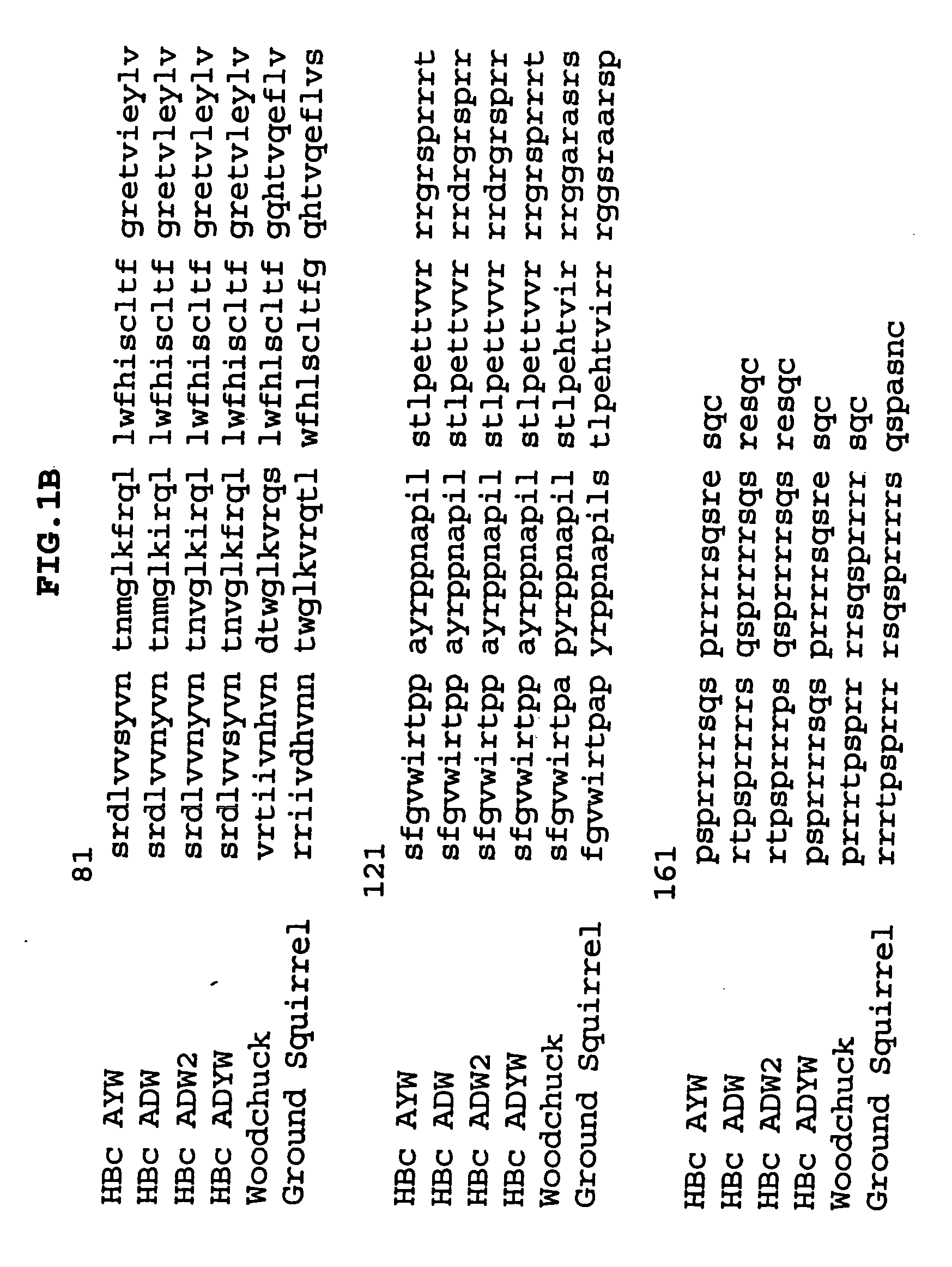Influenza immunogen and vaccine
a technology of immunogen and influenza, applied in the field of immunogen and vaccine, can solve the problems of inadvertent transfer of nucleic acids, interference from preexisting immunity to hbc, and difficulty in obtaining antibodies, and achieves the effect of high antibody titers, easy preparation, and large quantity
- Summary
- Abstract
- Description
- Claims
- Application Information
AI Technical Summary
Benefits of technology
Problems solved by technology
Method used
Image
Examples
example 1
B Cell Epitope-Containing Chimer Preparation
[0216] A. Preparation of Plasmid Vector pKK223-3N, a Modified Form of pKK223-3
[0217] Plasmid vector pKK223-3 (Pharmacia) was modified by the establishment of a unique NcoI restriction site to enable insertion of HBc genes as NcoI-HindIII restriction fragments and subsequent expression in E. coli host cells. To modify the pKK223-3 plasmid vector, a new SphI-HindIII fragment was prepared using the PCR primers pKK223-3 / 433-452-F and pKK223-NcoI-mod-R, and pKK223-3 as the template.
[0218] This PCR fragment was cut with the restriction enzymes SphI and HindIII to provide a 467 bp fragment that was then ligated with a 4106 bp fragment of the pKK223-3 vector, effectively replacing the original 480 bp SphI-HindIII fragment. The resultant plasmid (pKK223-3N; 4573 bp) is therefore 13 bp shorter than the parent plasmid and contains modified nucleotide sequence upstream of the introduced NcoI site (see FIG. 2, in which the dashes indicate the absent...
example 2
Preparation of Chimers Containing Influenza A M2 Polypeptide Sequences
[0237] A. Insertion of Influenza A M2 N-Terminal Domain into V2, V7, V8, V16, V34, V47, V48, V54, and V55 Cloning Vectors
[0238] For V2, V7, V8, V16, V34 and V55 constructs, synthetic dsDNA fragments coding for a M2e-sequence (residues 2-24 of the influenza A M2 protein; SEQ ID NO:9) were inserted into EcoRI / SacI restriction sites, whereas for V47, V48, and V54 constructs, residues 1-24 of the same were inserted into NcoI / SacI restriction sites. Synthetic dsDNA fragments were prepared by mixing complementary single stranded DNA oligonucleotides at equimolar concentrations, heating to 95° C. for 5 minutes, and then cooling to room temperature at a rate of −1° C. per minute. This annealing reaction was performed in TE buffer. The double-stranded DNAs are shown below with the encoded epitope sequence shown above.
V2 / V7 / VB / V16 / V34 / V55M2 (2-24) I S L L T E V E T P I R N E W G C RAATTAGCCTGTTAACCGAAG...
example 3
Assay Procedures
[0251] A. Antigenicity
[0252] 1. Particle ELISA
[0253] Purified particles were diluted to a concentration of 10 μg / mL in coating buffer (50 mM sodium bicarbonate, pH 9.6) and coated onto the wells of ELISA strips or plates (50 μL / well). The ELISA strips were incubated at room temperature overnight (about 18 hours). Next morning, the wells were washed with ELISA wash buffer [phosphate buffered saline (PBS), pH 7.4, 0.05% Tween®-20] and blocked with 3% BSA in PBS for 1 hour (75 μL / well). ELISA strips were stored, dry, at −20° C. until needed.
[0254] To determine the antigenicity of particles, antisera were diluted using 1% BSA in PBS and 50 μL / well added to antigen-coated ELISA wells. Sera were incubated for 1 hour, washed with ELISA wash buffer (above) and probed using an anti-mouse (IgG)-HRP (The Binding Site, San Diego, Calif.; HRP=horseradish peroxidase) conjugate (50 μL / well) or other appropriate secondary antibody for 30 minutes. After washing with ELISA wash bu...
PUM
| Property | Measurement | Unit |
|---|---|---|
| temperature | aaaaa | aaaaa |
| temperature | aaaaa | aaaaa |
| diameter | aaaaa | aaaaa |
Abstract
Description
Claims
Application Information
 Login to View More
Login to View More - R&D
- Intellectual Property
- Life Sciences
- Materials
- Tech Scout
- Unparalleled Data Quality
- Higher Quality Content
- 60% Fewer Hallucinations
Browse by: Latest US Patents, China's latest patents, Technical Efficacy Thesaurus, Application Domain, Technology Topic, Popular Technical Reports.
© 2025 PatSnap. All rights reserved.Legal|Privacy policy|Modern Slavery Act Transparency Statement|Sitemap|About US| Contact US: help@patsnap.com



